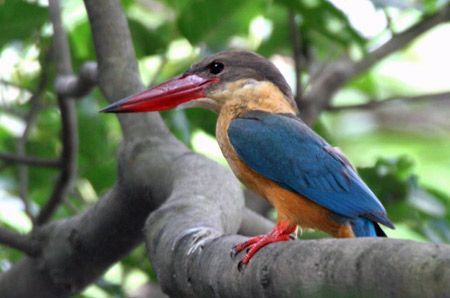8. The Kingfishers

Stork-billed Kingfishers eat mainly fish, using their large heavy bills effectively to catch and kill their prey. From their perch, usually about 2-4 m. above the water, they will plunge into the water. They also eat crabs, insects, frogs, mice, lizards, and birds, along with their eggs. Prey is brought back and whacked senseless against the perch.
They usually hunt near freshwater and along coasts and mangroves, particularly in habitats with suitable perches. Unlike the Collared, Stork-billed Kingfishers are rarely found near urban areas.
 IMAGE CORNER
IMAGE CORNER Wallpapers/Cool Images
Wallpapers/Cool Images Animals and Wildlife
Animals and Wildlife Most Amazing Exotic Birds
Most Amazing Exotic Birds IMAGE CORNER
IMAGE CORNER Wallpapers/Cool Images
Wallpapers/Cool Images Animals and Wildlife
Animals and Wildlife Most Amazing Exotic Birds
Most Amazing Exotic Birds
